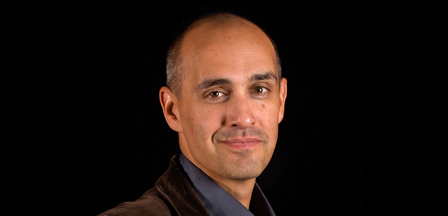Published on

A blog article by Sidney Ribaux, director general and cofounder of Equiterre.
When Enrique Peñalosa was mayor of Bogotá, Colombia, he said, “A developed country is not a place where the poor have cars. It’s where the rich use public transportation.”
Paris, London, Zurich, Rome, Amsterdam, Tokyo, Hong Kong and Singapore, for instance.
Most major European and Asian cities have public transit services that are used by most people, regardless of their income. And they’re so efficient that it’s easy to live without a car. The same can’t be said for North America. But many cities—New York, San Francisco, Vancouver, Toronto, Ottawa and Montreal—have good public transit systems.
For example, some 80% of Montrealers use public transit at least once a year, and 50% of commuting to downtown is by public transportation. Montreal is still resisting the do everything by car culture.
This is not the case for the rest of Quebec, not even for its second largest city.
In Quebec City, some radio hosts make insulting remarks about public transit users! And yet Quebec City has several dense neighbourhoods and fantastic potential for public transit projects.
The latest error made by our national capital’s popular radio stations was demonizing an excellent public transit project and advocating for the construction of a tunnel between Lévis and Quebec City. Media pressure was so strong that the Ministry of Transport set up a project office and provided $20.5 million to study the feasibility of this third link between the North and South Shores.
All Quebecers should be concerned. First, because this is OUR national capital we’re talking about—and we want to be proud of it. And second, because it’s OUR money that will fund the project.
How much money? The bus rapid transit (BRT) project for Quebec City would cost less than $1 billion. It would provide a frequent service with triple-articulated buses (150 passengers) running in a dedicated bus-only lane. The concept was developed in Brazil to offer a similar quality of service to a tramway or even a metro, at a lower cost.
The tunnel project would cost $4 billion. This third link would be built between Beauport and Beaumont—to the east of the Quebec City and Lévis downtown cores.
For several years, Quebec as a whole was keenly interested in a less costly investment. And with good reason. The Videotron Centre cost the Quebec Government nearly $200 million. Whether people are for or against the project, a public debate is needed when this kind of money is to be invested in one area and a minority of Quebecers stand to benefit.
The BRT would allow 40,000 people to commute morning and evening more easily. As it stands, this transformative project, including rolling stock, would cost around $25,000 per user.
It’s difficult to estimate how many motorists would use the tunnel. Today, 18,000 cars cross the river every morning on one of the two Quebec City bridges. In one direction, they can carry up to 30,000, so the congestion problem between the two cities has nothing to do with the bridges. In fact, right now and in the foreseeable future, there is no justification for such an investment.
What’s more, a third link won’t alleviate traffic congestion in Quebec City, it’ll make it worse. Think about it. If you invite too many guests to a birthday party, you won’t be able to fit more people in your house by adding more doors. The same goes for cities!
But let’s put on our rose-tinted glasses for a moment, and for argument’s sake, let’s say the third link would allow 8,000 more cars to cross the river. Building this tunnel would cost . . . wait for it . . . $500,000 per motorist! And that doesn’t include car or battery costs.
So there are two options: $500,000 (and more congestion) or $25,000 (and less congestion) per person. Which one do you think our elected officials should choose?
The answer will determine if Quebec is ready to become a developed country.
It’s high time the elected members of the National Assembly had a vision for transportation. Spread the word!




